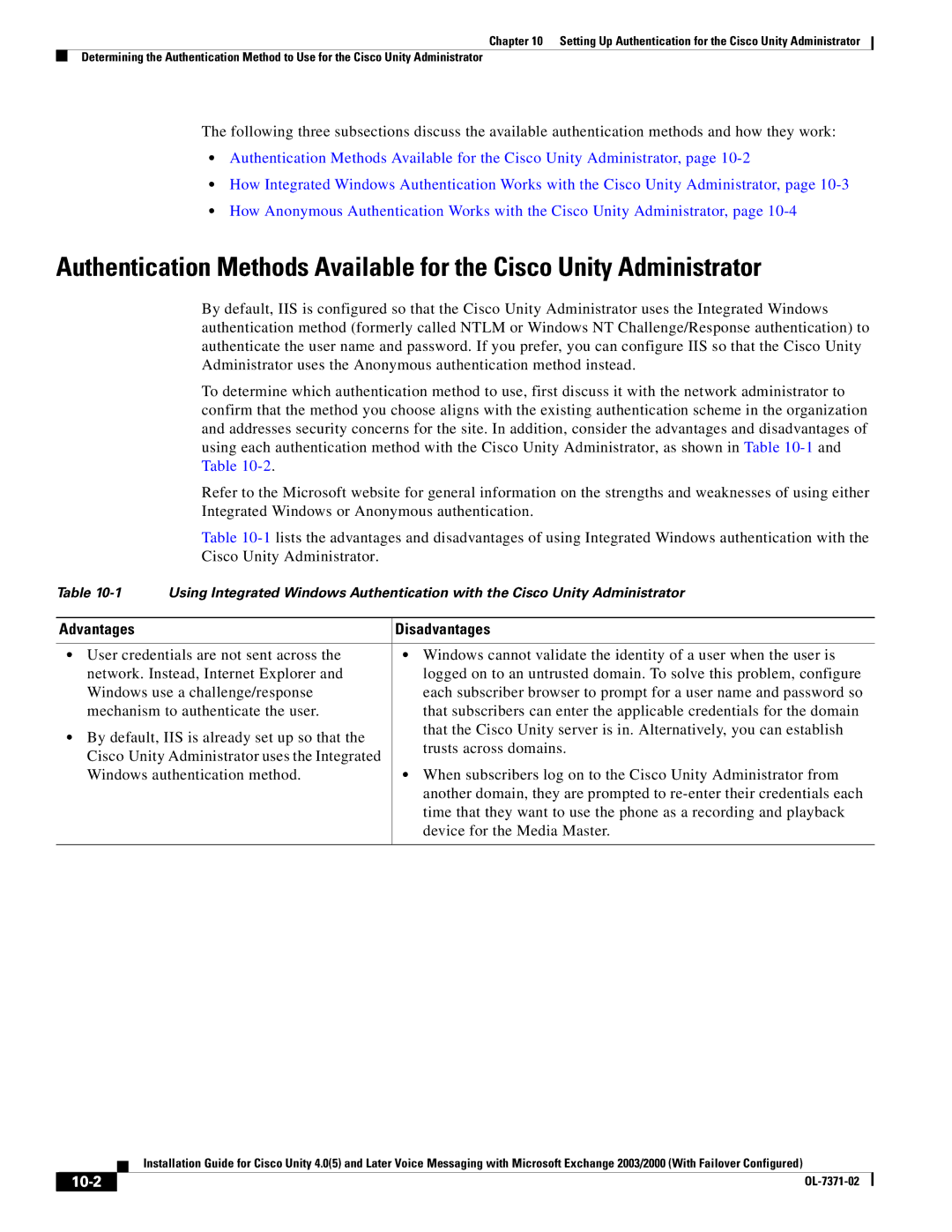
Chapter 10 Setting Up Authentication for the Cisco Unity Administrator
Determining the Authentication Method to Use for the Cisco Unity Administrator
The following three subsections discuss the available authentication methods and how they work:
•Authentication Methods Available for the Cisco Unity Administrator, page
•How Integrated Windows Authentication Works with the Cisco Unity Administrator, page
•How Anonymous Authentication Works with the Cisco Unity Administrator, page
Authentication Methods Available for the Cisco Unity Administrator
By default, IIS is configured so that the Cisco Unity Administrator uses the Integrated Windows authentication method (formerly called NTLM or Windows NT Challenge/Response authentication) to authenticate the user name and password. If you prefer, you can configure IIS so that the Cisco Unity Administrator uses the Anonymous authentication method instead.
To determine which authentication method to use, first discuss it with the network administrator to confirm that the method you choose aligns with the existing authentication scheme in the organization and addresses security concerns for the site. In addition, consider the advantages and disadvantages of using each authentication method with the Cisco Unity Administrator, as shown in Table
Refer to the Microsoft website for general information on the strengths and weaknesses of using either Integrated Windows or Anonymous authentication.
Table
Table
Advantages | Disadvantages | |
|
| |
• User credentials are not sent across the | • Windows cannot validate the identity of a user when the user is | |
network. Instead, Internet Explorer and | logged on to an untrusted domain. To solve this problem, configure | |
Windows use a challenge/response | each subscriber browser to prompt for a user name and password so | |
mechanism to authenticate the user. | that subscribers can enter the applicable credentials for the domain | |
• By default, IIS is already set up so that the | that the Cisco Unity server is in. Alternatively, you can establish | |
trusts across domains. | ||
Cisco Unity Administrator uses the Integrated | ||
| ||
Windows authentication method. | • When subscribers log on to the Cisco Unity Administrator from | |
| another domain, they are prompted to | |
| time that they want to use the phone as a recording and playback | |
| device for the Media Master. | |
|
|
Installation Guide for Cisco Unity 4.0(5) and Later Voice Messaging with Microsoft Exchange 2003/2000 (With Failover Configured)
|
| |
|
